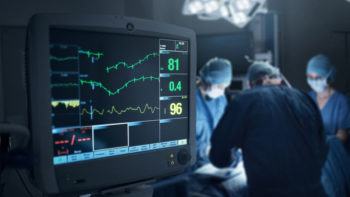Researchers Use Machine Learning To Predict Bleeding During Coronary Procedures
Bringing together man and machine, a team of researchers is studying how machine learning could be used to better predict the probability of a patient bleeding during and after heart surgeries. Their findings have set the stage for providing doctors, researchers and clinicians a vital, data-driven tool to help them quickly determine whether a patient is at risk.
Analyzing previously collected data from the American College of Cardiology’s National Cardiovascular Data Registry, which includes more than 3 million procedures conducted across the United States of America, the researchers investigated how applicable and effective machine learning would be to identifying high- and low-risk patients.
“We need to be able to really explain what’s going on and understand what it means for somebody to be high risk or low risk (of bleeding) so that treatment decisions can be made off of that,” said Dr. Bobak Mortazavi from Texas A&M University.
This could be the difference between life and death in the operating room. And, almost as important, could mean the difference between being readmitted at a later date and staying on the road to recovery.
“One of the reasons that the medical field has suddenly become very open to working with computer scientists is that, under certain healthcare legislature, there’s a lot of clauses, now, regarding heart failure, readmissions and quality of care improvements,” said Mortazavi. “Sometimes patients are even kept in the hospital longer post-procedure if it means that they don’t come back later.”
“We are using the newest, latest and greatest computer science, artificial intelligence and machine learning techniques to see how we improve patient care, clinical decision making and the prediction of what’s going to happen,” said Mortazavi.
The challenge, he explained, is that many of these techniques were developed on the computer science side, where decision-making parameters are easily defined and little mistakes – such as a Fitbit miscounting a few steps – is not a big deal. However, for health care purposes, results and conclusions must not only be highly accurate, but also need to be interpretable by whomever is using them.
In order to achieve this interpretability, the team looked at the categorization of high- and low-risk patients as a spectrum, rather than a black-and-white decision – shifting away from traditional pattern recognition techniques that match a data set to a specific, programmed conclusion.
As Dr. Harlan Krumholz, a cardiologist and professor at Yale University, explained in a recent news story, the team is discovering that machine learning has the potential to improve the ability to predict risk better than traditional approaches. In the future, such techniques could enable doctors and engineers to personalize risk estimates to a much greater extent. And in near real time.
As Mortazavi described, risk decision models, such as the ones used in the team’s study, are retrospective – reflecting on recorded data and drawing conclusions from that. However, the future of this research and the bridging of engineering and health care has set the stage and paved the way for the development of proactive decision tools that present real-time data in operating rooms. This would allow medical professionals to view the current bleeding risk of their patients, as concluded by machine learning programs.
“There’s a lot of people that want to integrate machine learning into health care, but then they get challenged by what it really means to understand and interpret medical data,” said Mortazavi. “So, I think the exciting thing, here, is that we’ve found a way to get computer science to directly impact medicine.”
The research team includes Mortazavi, assistant professor in the Department of Computer Science and Engineering at Texas A&M, along with researchers and collaborators from Yale University and the American College of Cardiology. The project is headed by Krumholz.
This article by Hannah Conrad originally appeared on the College of Engineering website.






